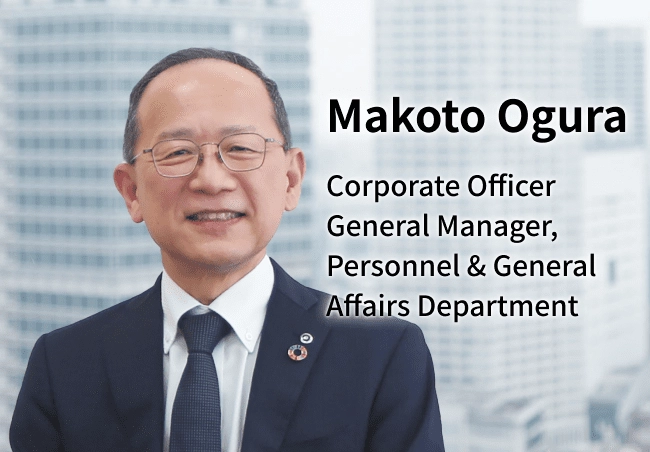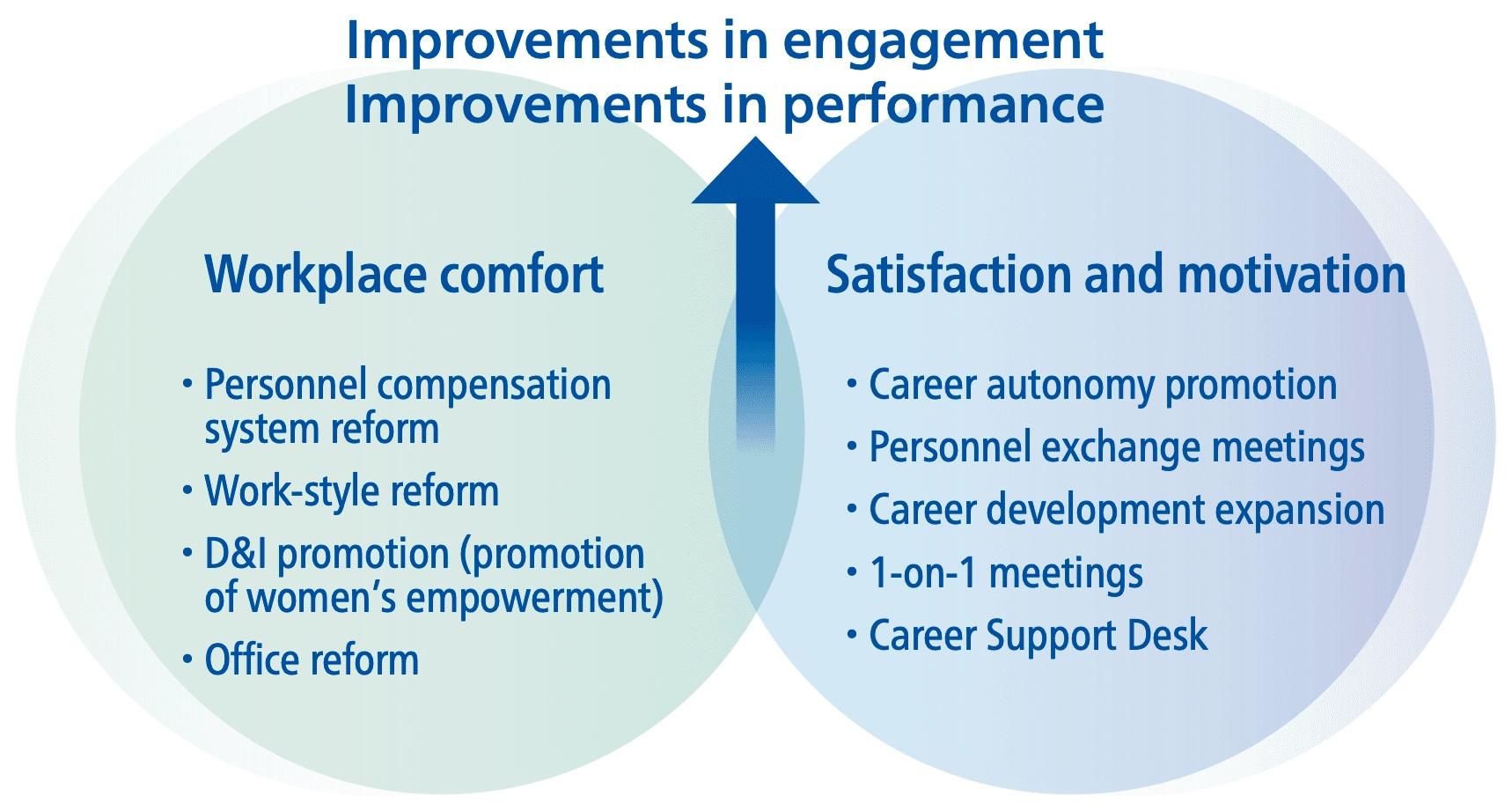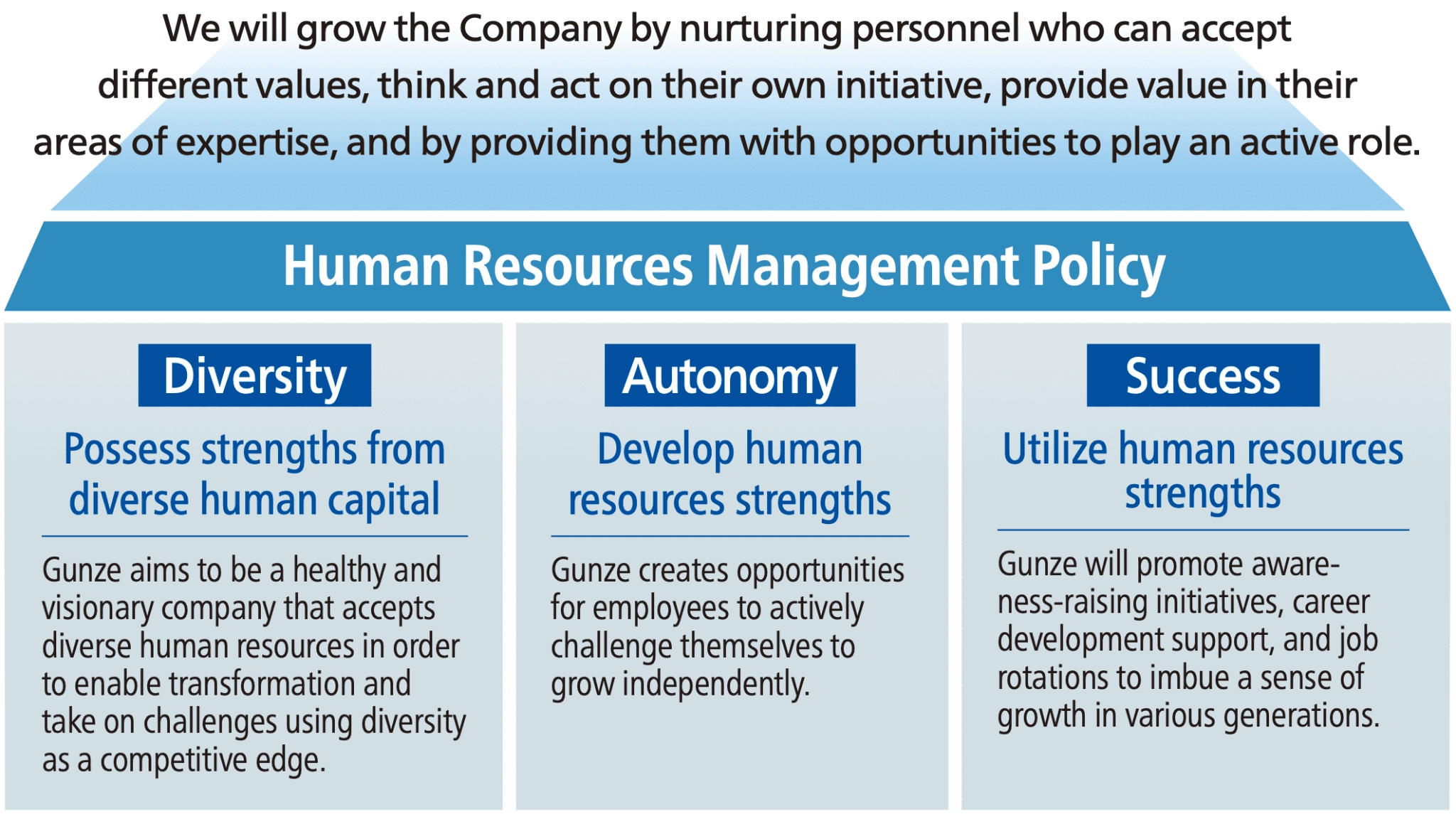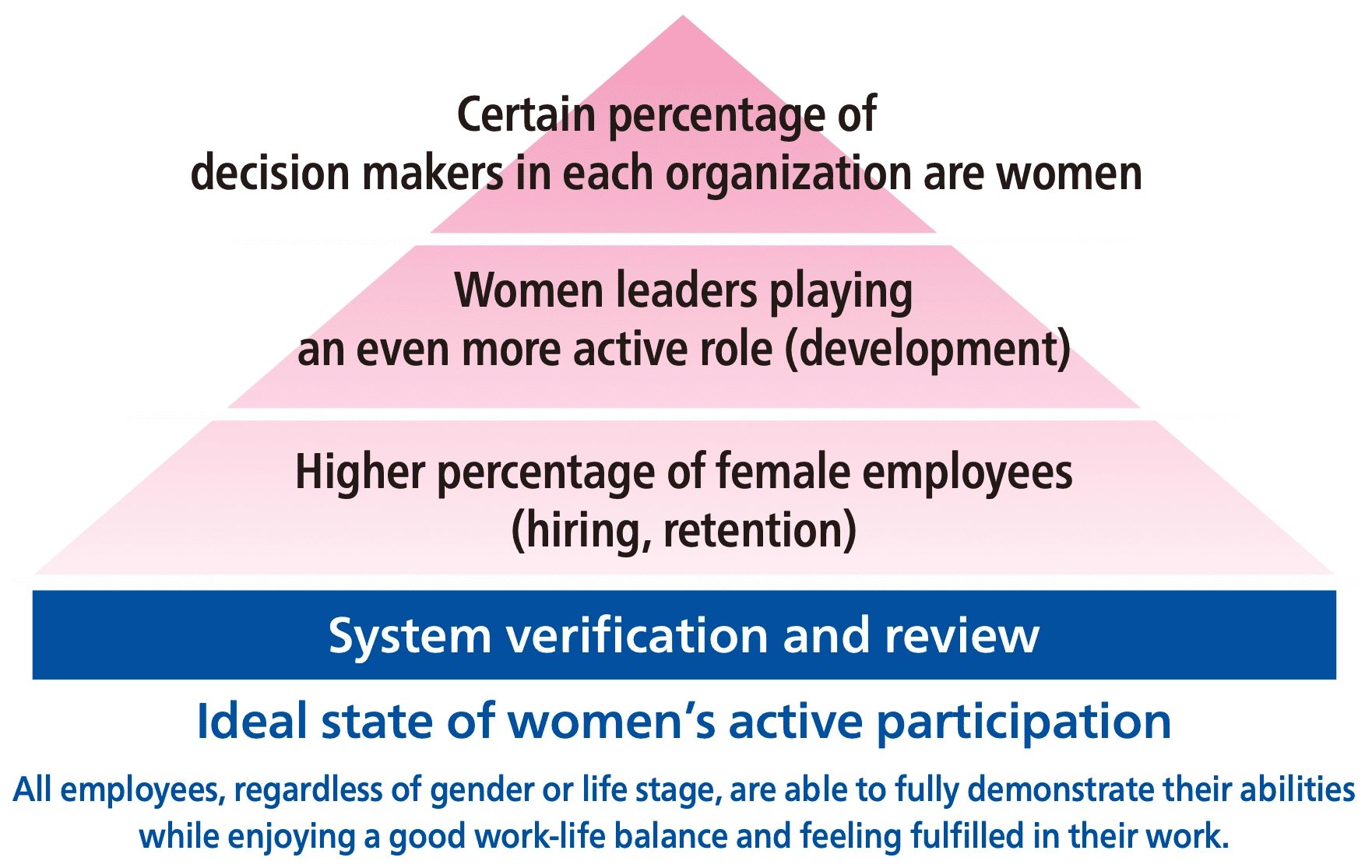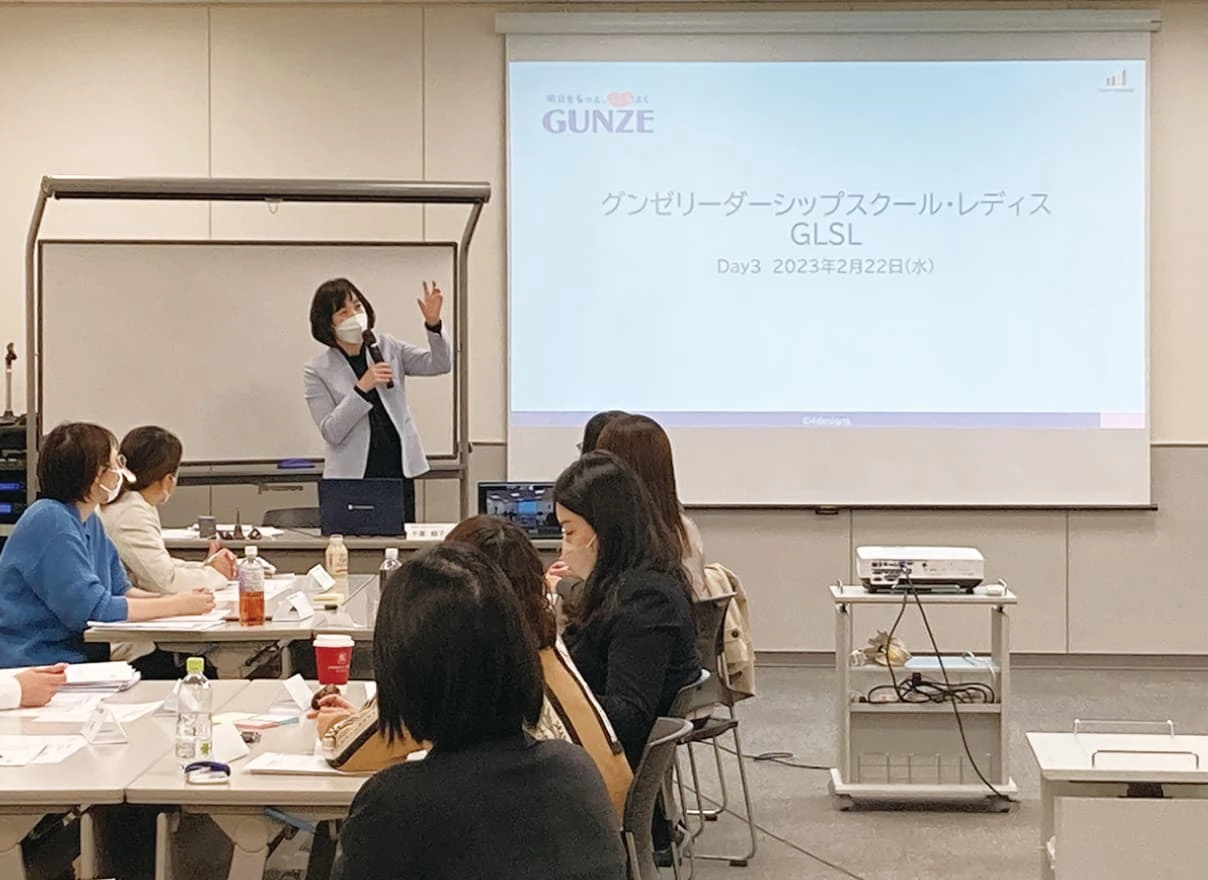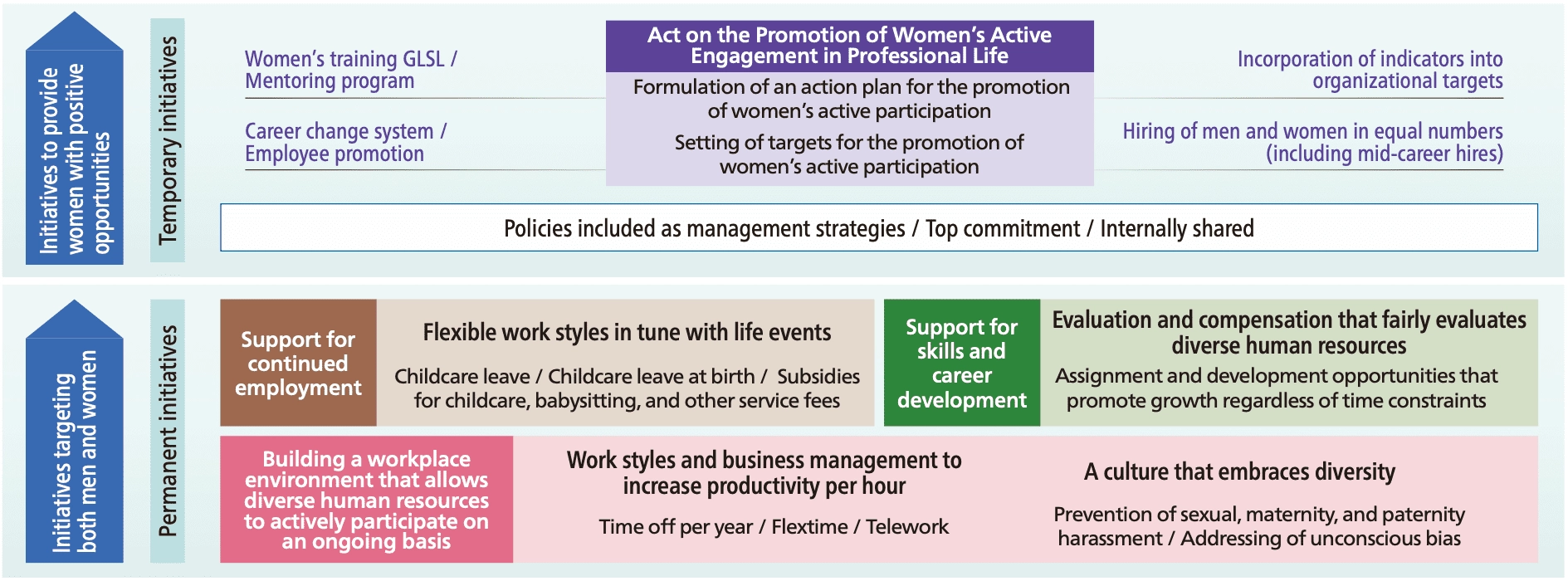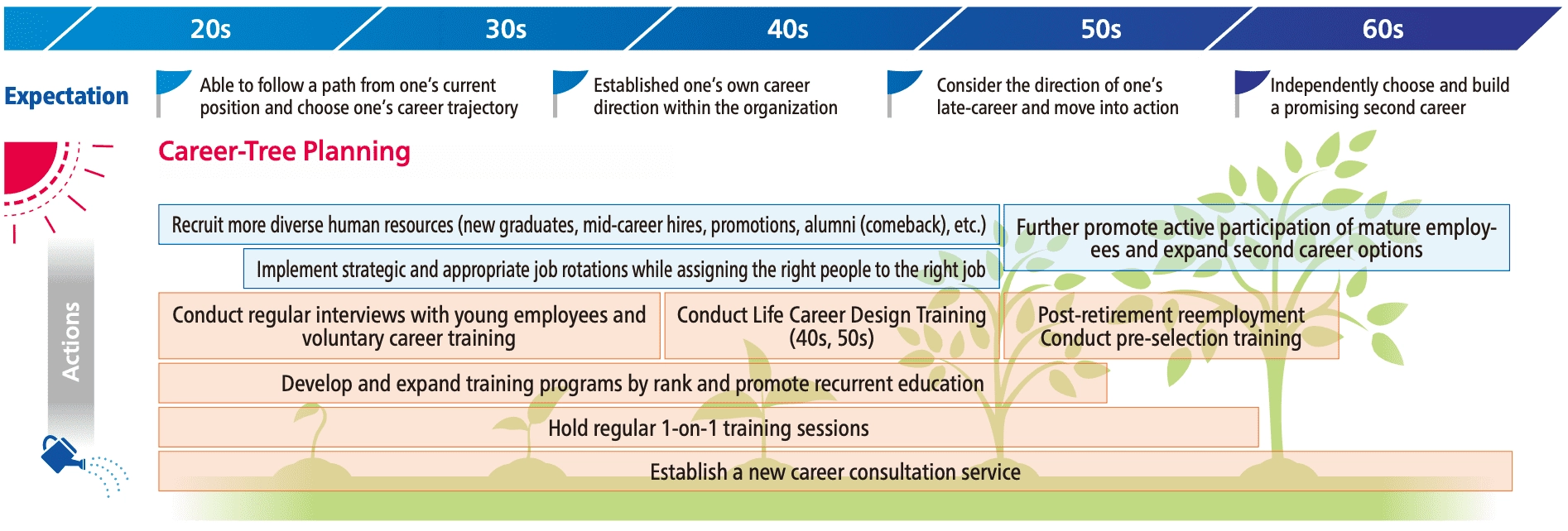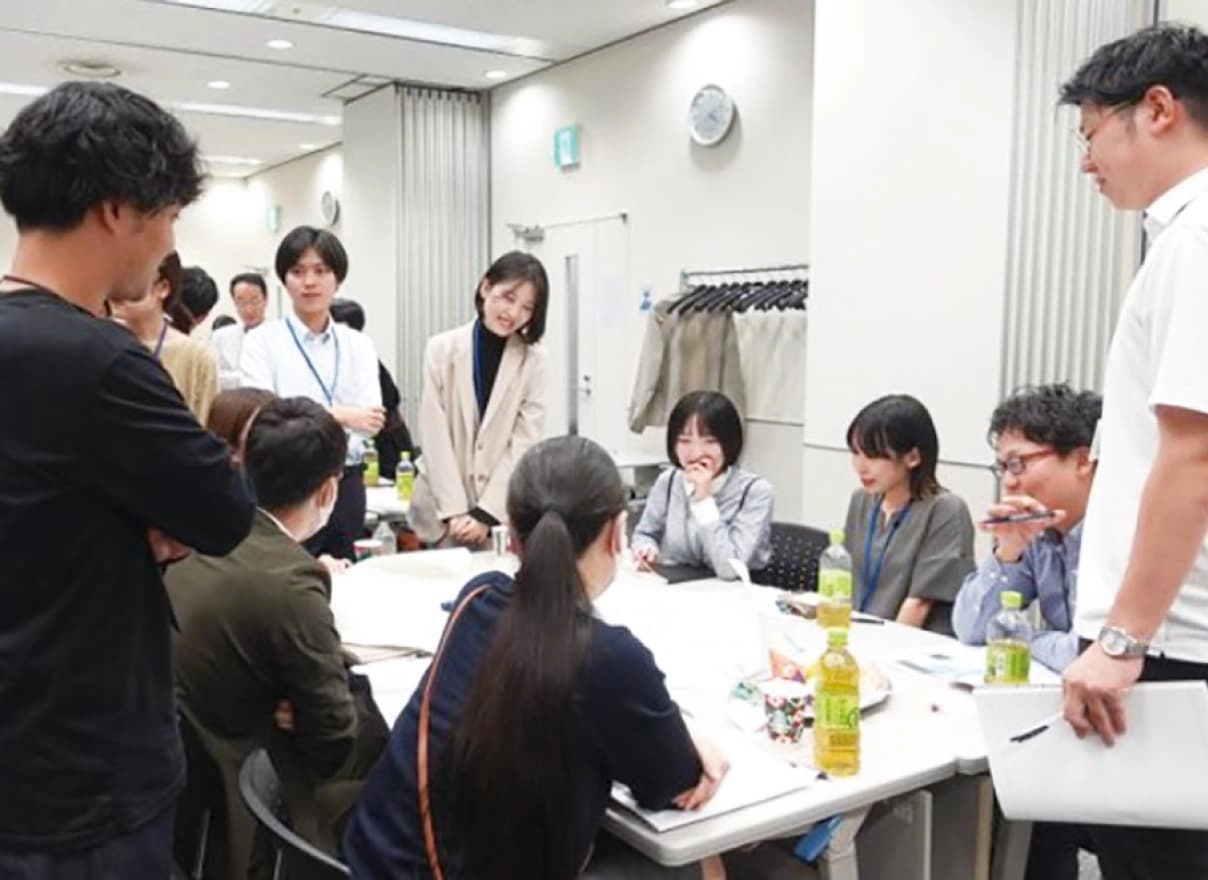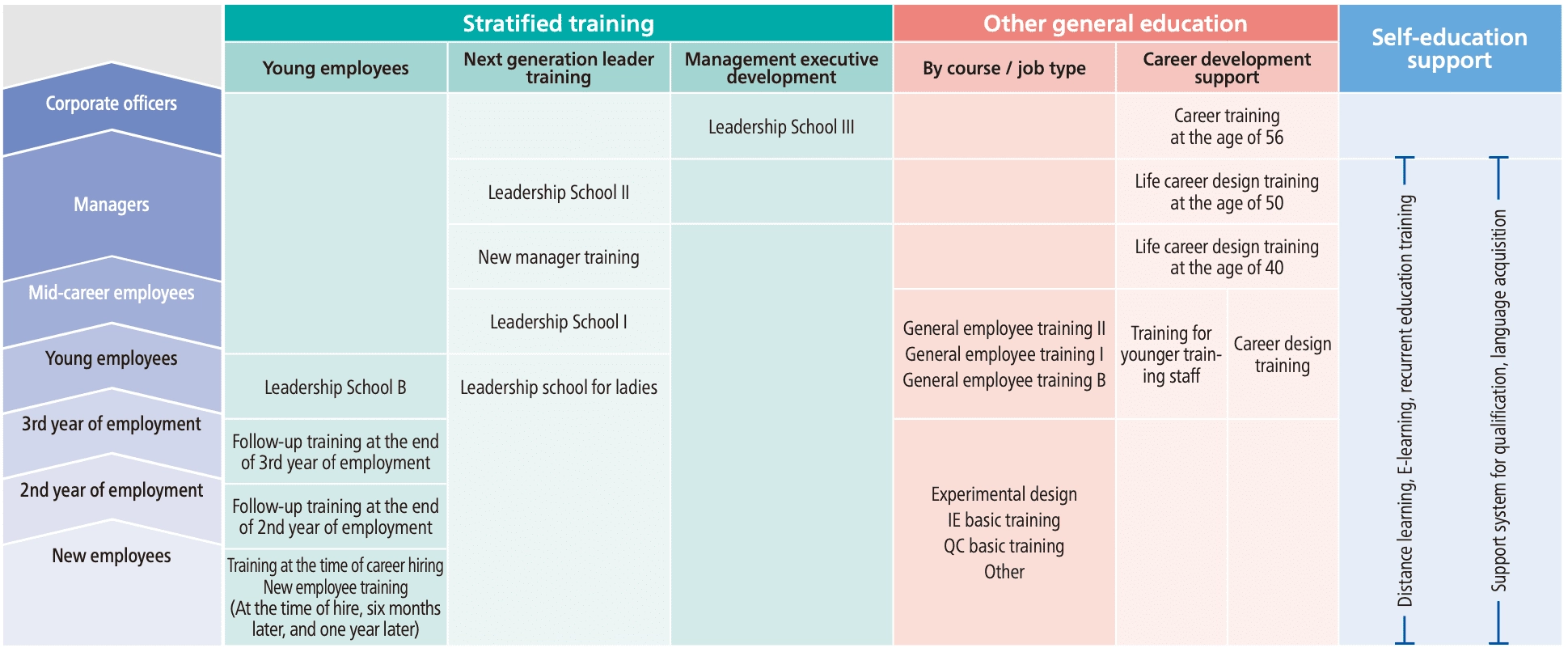The Gunze Group’s basic human resources strategy approach under the Medium-term Management Plan VISION 2030 stage1 is outlined as follows.
Human resources are our greatest management resource. We are fostering a corporate culture in which all employees can fully demonstrate their abilities with a
sense of job satisfaction, which is the cornerstone of corporate competitiveness, to become a healthy and visionary company.
Based on this strategy, we define the type of human resources we seek as those who can accept different values, think and act on their own initiative, and provide
value Materiality, KPIs (FY2024 – FY2030 Targets) in their areas of expertise. In tune with our human resources management policy, we are advancing initiatives that
emphasize the three pillars of diversity, autonomy, and success. In pursuing these initiatives, we first conducted an engagement survey in 2022 to clarify the
status and conditions surrounding employees and the organization. Over the ensuing two years, we have taken steps to verify the survey’s effectiveness.
While yet to achieve our established goals, Gunze’s strengths and challenges have become abundantly clear. The scope of the survey is extensive and covers the
Company’s structure. Elements extend from workplace relationships to the health of employees. Naturally, the challenges that we face cannot be resolved by a single
one-to-one initiative. While currently promoting the following measures, we believe that the fruits of our endeavors will be felt in the future.
With a target date of FY2026, we plan to undertake a fundamental reform of our personnel system. At the same time, we will closely monitor conditions at each
workplace and take steps to foster an open and comfortable environment. Our goal is to become a company of choice in society by enhancing employee motivation and
engagement and maximizing the human capital of the GUNZE Group.
| Category | Indicator | FY2023 |
KPIs FY2024 Targets |
FY2030 Targets |
||
|---|---|---|---|---|---|---|
| Targets | Results | |||||
|
Evolution of Corporate Constitution |
Ratio of women in managerial roles |
Promoting women’s active participation |
5.0% | 7.0% | Over 6% | Over 20% |
| Ratio of women employees | 34.0% | 33.8% | 35% | 41% | ||
| Ratio of women new graduates hired on a main career track (excluding those working rotating shifts) | 50.0% | 51.9% | 50% | 50% | ||
| Child-rearing support | Men’s paternity leave utilization rate | 40.0% | 42.0% | 50% | 70% | |
| Corporate culture reform | Engagement score |
64 points (estimate) |
62 points |
70 points (estimate) |
80 points (estimate) |
|
| Work-style reform | Annual leave uptake | 75% (15 days) | 74.5% (14.9 days) | 75% | 100% | |

